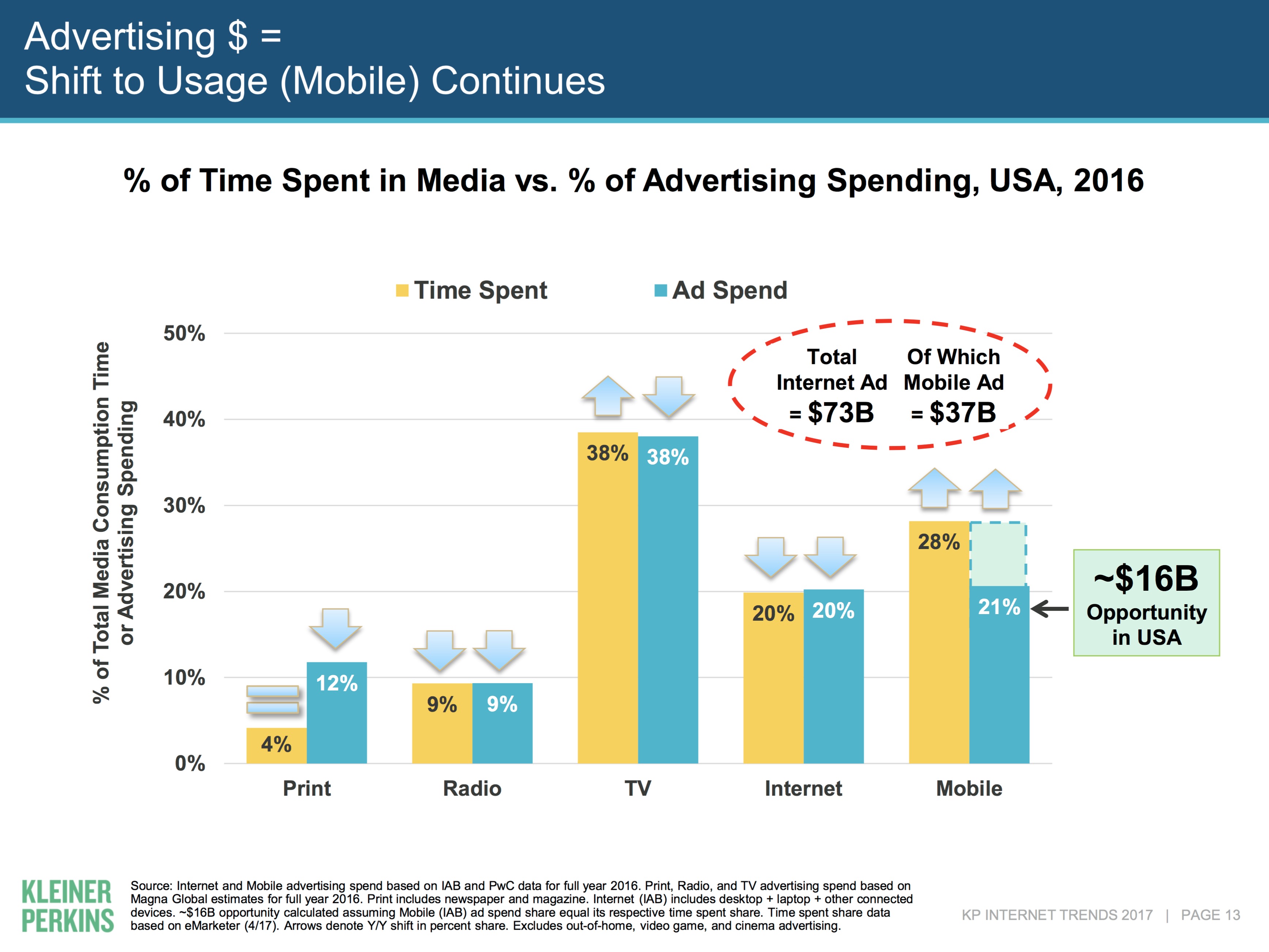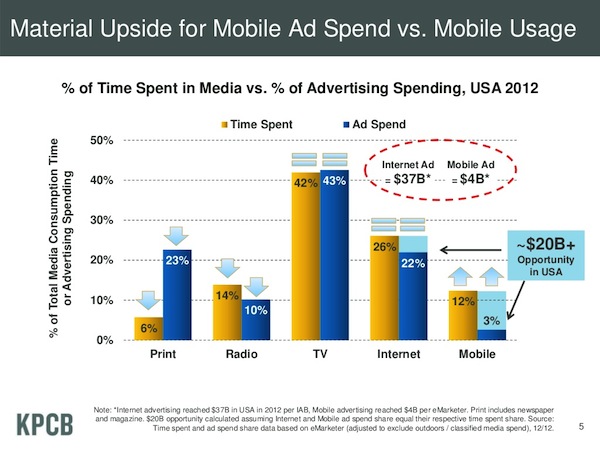
It’s an annual moment of print realism here at Nieman Lab: The posting of the attention/advertising slide from Mary Meeker’s state-of-the-Internet slide deck. It’s enough of a tradition that I can now copy-and-paste from multiple versions of this post. Here’s a sentence from the 2013 version:
For those who don’t know it, Meeker — formerly of Morgan Stanley, at VC firm Kleiner Perkins since late 2010 — each year produces a curated set of data reflecting what she sees as the major trends in Internet usage and growth. It may be the only slide deck that qualifies as an event unto itself.
And a chunk from the 2014 version:
What’s useful about Meeker’s deck is that its core data serves as a punctuation mark on some big, ongoing trends. The kind of trends we all know are happening, but whose annual rate of progress can be hard to judge. Like, say, the continued demise of print.
The Meeker slide that always interests me most is the one where she shows how American attention is divided among various forms of media — and how that division lines up with where advertising dollars go. How much of our attention goes to television, say, versus how much of our advertising goes there?
It’s not absolute dogma that the two — audience attention and advertising dollars — will always be equal. But it makes sense that they would tend toward parity. More people listening to the radio should lead to more companies advertising on the radio, or vice versa.
So let’s travel back in time. Here’s Meeker’s chart for 2011:

The two things that jump out at me: Print gets a lot more advertising than it gets attention. And mobile is the opposite. You’d think that would equalize with time.
Here’s 2012:

Equalization! Or at least the path to equalization, proportionately. Print loses attention, but loses ad dollars a bit more quickly; mobile gains attention, but gains ad dollars a bit more quickly. (Sizable margin of error here, it’s worth saying.)
Here’s 2013:

The print story remains the same: down in attention and in ad dollars. But note there is still a wide gap between the two — print still gets far more ad dollars than its hold on the American attention would seem to “deserve.”
Here’s 2014:

The mobile growth everyone anticipated is happening — moving from 4 percent to 8 percent in 12 months’ time. And print continues to lose both time spent and revenue.
Here’s 2015:

On the positive side, print’s share of attention remained steady at 4 percent. You’ll note, though, that when the numbers get that small, you’d need roughly a 25 percent decline in attention share to drop from 4 percent to 3 percent. So steady doesn’t necessarily mean steady — it just means a pace of decline less than that. (And of course we don’t know if that 4 percent is really 3.51 percent of 4.49 percent either.)
The ad-side trend, though, is unchanged — down another two points from 18 percent to 16 percent. And, of course, there’s still a long way to fall from there. Note, too, that mobile advertising had another huge jump, from 8 percent to 12 percent.
Finally, here’s the newest slide for 2016 (it’s slide 13):

Take a look at mobile! Up from 12 to 21 percent of ad revenue in one year. We now spend 40 percent more time looking at media on our phones than on our laptops and desktops. And there’s still plenty of room for growth, both in ad spend and in time spend. But given that the vast majority of new digital ad revenue goes to Google or Facebook — see Meeker’s slide 15 for more on that — that money isn’t exactly a boon to publishers.
But then there’s print — staying steady at 4 percent of time spent for the third straight year, but another big drop in ad dollars, from 16 to 12 percent. That lines up with the evidence that the decline in newspaper print advertising accelerated last year in a big way.
Let me wrap up by copying what I wrote four years ago, since the overarching trends haven’t really changed since then:
Print advertising is not coming back. It will fall further. Substantially further. All newspaper planning for the coming few years needs to reckon with that basic fact.
Mobile continues its rocket rise, and there’s still lots of room for ad revenue growth. And now it’s even eating away at the Great American Time Suck, television. Mobile is eating the world, and most news organizations make only a pittance off it.
Lots more interesting stuff in Meeker’s complete deck.